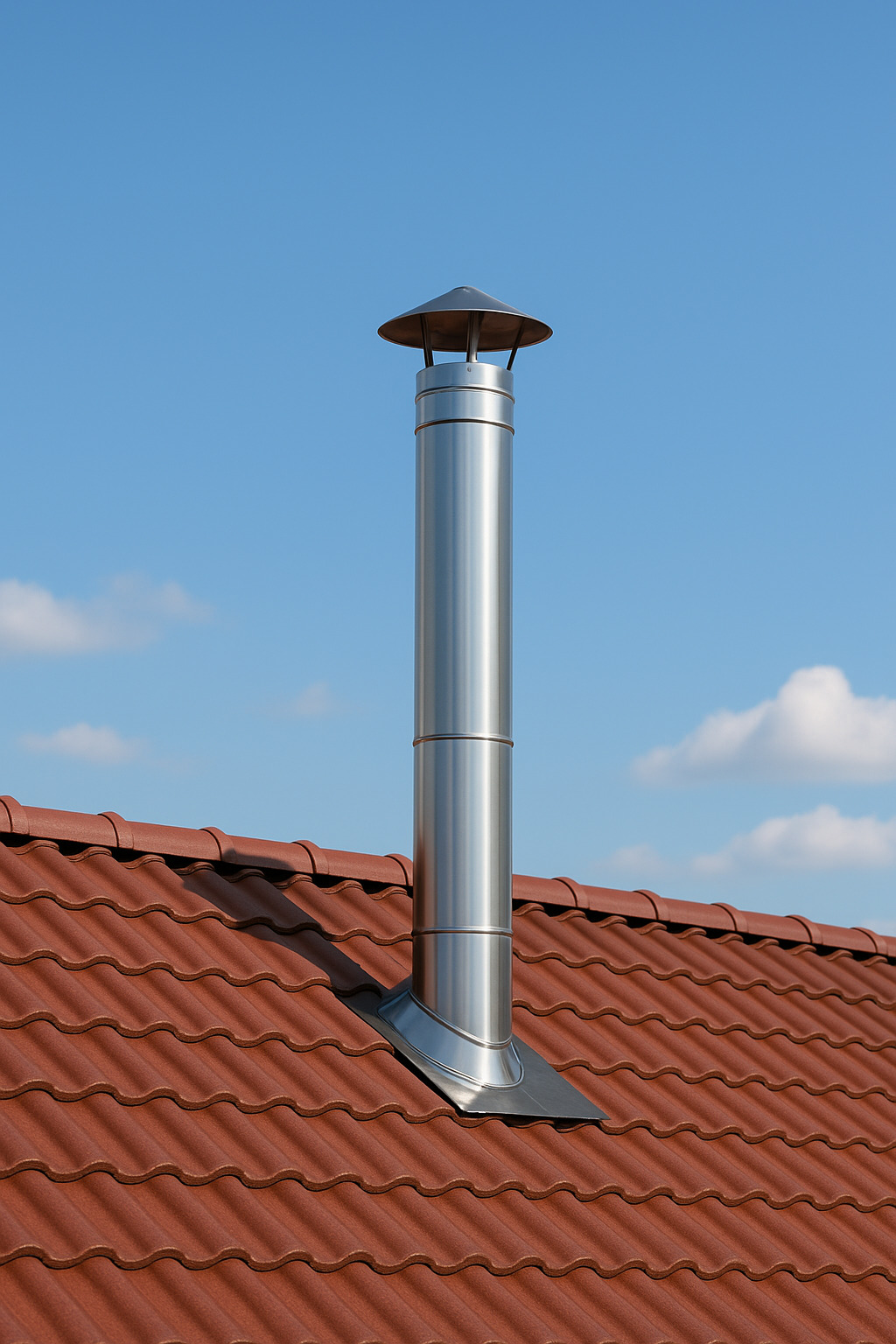

What to Consider When Choosing a Chimney Cap
A chimney cap is an important component located at the highest point of the chimney system in contact with the external environment, serving both technical and protective functions. It protects the chimney opening against rain, snow, and wind, while also preventing backdraft and the entry of outside air into the system. Therefore, choosing the right chimney cap is crucial for the efficient and safe operation of the chimney system.
Why Material Quality Matters in Chimney Cap Selection
Since the chimney cap is directly exposed to outdoor conditions, the durability of the material it is made from is critical for long-term use. Stainless steel chimney caps offer superior resistance to temperature fluctuations and corrosion. This durability is especially important in areas with heavy rainfall and in industrial facilities, as it directly affects system performance.
In Single Wall Chimney chimney systems, cap selection must be even more careful. Since these systems lack insulation, external factors can directly affect the interior of the chimney, potentially causing condensation, corrosion, and reduced efficiency.
Functionality According to Chimney Cap Type
A chimney cap is not merely an element that covers the chimney opening; different types serve different needs. The most common types of chimney caps are:
- Fixed Cap: Provides basic protection and prevents rain and snow from entering the chimney.
- Wind-Resistant Cap: Optimizes draft in windy areas.
- Rotating Cap: Uses wind power to enhance chimney draft, particularly suitable for buildings with draft issues.
- High-Cover Cap: Used in industrial systems with high smoke output, improving gas direction.
In Single Wall Chimney systems, fixed or rotating caps are generally preferred. However, if proper sealing measures are not implemented under the cap, performance may decrease.
Compatibility with Structure and Chimney System
When selecting a chimney cap, factors such as the system’s diameter, slope, installation height, and device type must be considered. Caps that are not correctly sized can block gas flow or disrupt draft. Similarly, a cap type that is incompatible with the technical design of the system may cause condensation and soot buildup.
In Single Wall Chimney systems, such mistakes can increase risk levels. Because these uninsulated systems experience sudden heat loss, condensation may form under the cap, leading to corrosion and a gradual decrease in draft over time.
Aesthetics and Installation Details
A chimney cap is not only a technical component but also an aesthetic one. For chimney outlets visible on the roof or exterior walls, modern-looking, well-finished caps are recommended. Stainless steel or specially coated caps provide both durability and a visually appealing appearance.
During installation, it is crucial that the cap fits the chimney perfectly and is properly sealed. This sealing is especially critical in Single Wall Chimney chimney systems, where cap connection points must be carefully inspected.
Protection Against Wind and Backdraft
The chimney cap is the most critical component for preventing smoke backdraft, especially in tall buildings and windy areas. An inappropriate or insufficiently selected cap can allow chimney gases to enter the indoor space, causing energy loss and posing health risks.
In Single Wall Chimney systems, this risk is even higher, as cold outside air can quickly create condensation in the uninsulated pipe and trigger backdraft.
The chimney cap is a small but essential component of the chimney system. Material quality, compatibility with chimney type, installation method, and resistance to weather conditions are all key criteria for proper cap selection. In Single Wall Chimney systems exposed to the outdoors, the protection and sealing capability of the cap become even more critical. Chimney caps provided by companies specializing in stainless steel and offering project-specific solutions can extend system life and improve energy efficiency.














